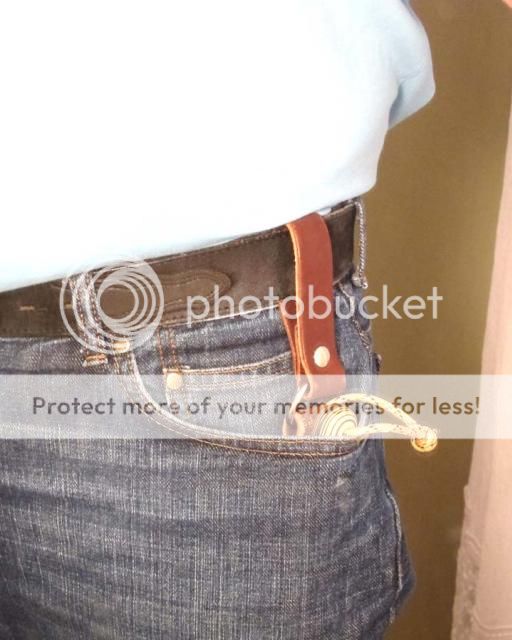I don't see a problem with tests that give some dynamic load to the lock, in addition to just static weight. I have a Spyderco lockback that could probably withstand a pretty hefty amount of weight before failing. However, it will pop unlocked if bumped suddenly. I don't mean a heavy spine whack, either. I can hold the handle with just my thumb and forefinger, hold it 6 inches above a table edge, and tap the spine down against the table, and it will unlock. I carried a Case Sharktooth on the farm for a couple years, and its lock also became unreliable with use. Have a custom liner lock that doesn't handle sudden loading, too. One time I was using it when a wasp started buzzing me. I took a quick swipe at it with the knife (and missed, of course

) and the blade folded up on my fingers. And it hit nothing but air.
A fixed blade doesn't have these shortcomings, and I carried several of them over the years, but I couldn't come up with a system that was as handy as a one handed folder, especially in winter. It takes a bit of extra time, and lots of extra care and attention to resheathe a fixed blade. I can't hardly even see the sheath on my belt when wearing winter clothing. Trying to blindly resheathe it while wearing gloves is a good way to stab yerself. But a one handed folder can be out, cut that baling twine (or whatever), and be back in my pocket in one fluid motion in less than 2 seconds, without having to look, which is especially helpful when ya need to keep your eyes on rambunctious steers.
I used up several knives until they were plumb wore out, and broke some, but ya know what finally ended even more of 'em? They got lost. A super strong lock, or new whiz bang steel, does absolutely nothing to help ya find that knife that was planted *somewhere* on the back 40, or trampled under straw and manure in the cattle shed. (That one was a fixed blade that I set down, because I couldn't safely resheathe it at the time, by the way.) When will someone come up with a homing device or somethin' to make knives loss-proof? That might prove to be an even more valuable contribution to the knife community than a new lock.



